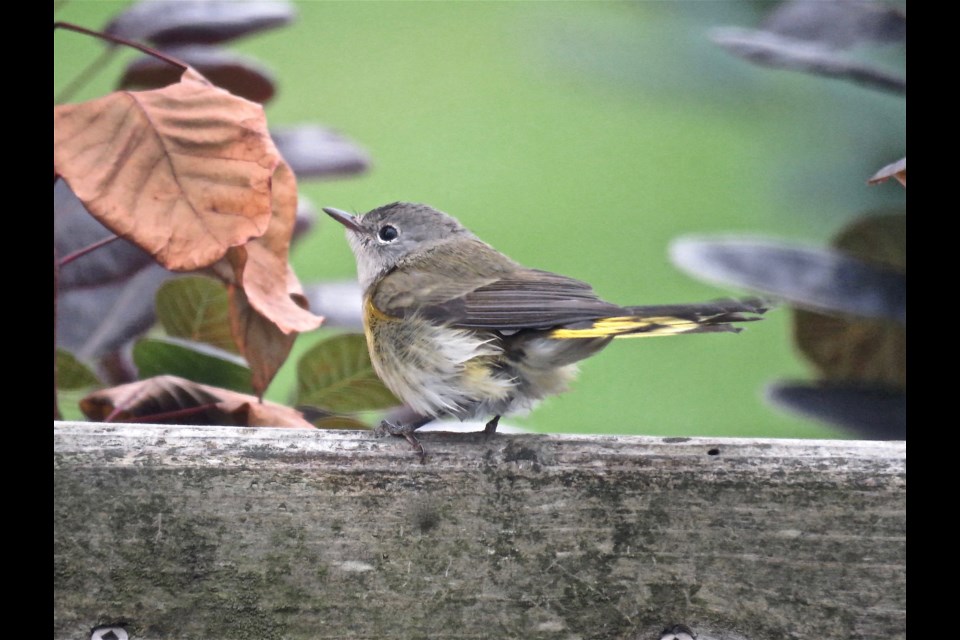I had a wonderful wood warbler experience on Wednesday, and I get to use alliteration in telling the story.
As some readers know, I write about birds I see on this farm property. The property includes five houses, fields and forests with trees and bushes around the homes.
Last week, I joined an online group of bird enthusiasts who are much more knowledgeable than I, and move further afield in pursuit of birds than I typically do.
I was fascinated and somewhat envious of the various migrating warblers people were encountering and photographing. I was not previously aware of most of the 43 species of warblers in Ontario. They are small, and often very colourful songbirds. They can be difficult to identify because of similarities among them. As I was looking at the group posts on Wednesday morning, someone questioned if he had seen a female American Redstart. Others confirmed his sighting.
I developed quite a keen desire to see some of these warblers and wondered where might be the best place to look. I got up from my computer to stand in thought at the kitchen window.
Lo and behold right before my very eyes, was a female American Redstart. I was totally amazed by such luck and synchronicity.
As always, my camera was near at hand and I took some photos through the window. The Redstart shook its impressive yellow tail feathers at me and strutted along the deck railing.
It was amazing to see, and I knew right away what I was seeing from the post I had just read quite honestly minutes before. It just shows the power of thought, and that wishes really do come true.
American Redstarts are among the most common wood warblers, and are 11-14 cm long (4 1/2-5 1/2") . The male is black with bright orange patches on wings and tail, and has a white belly. My luck did not stretch to also seeing a male.
It turns out the female wasn’t shaking her feathers for my benefit. According to allaboutbirds.org she was trying to “startle its prey out of the foliage by flashing its strikingly patterned tail and wing feathers”. Redstarts mostly eat insects, sometimes by catching them out the air. They will also eat seeds and berries.
American Redstarts live in deciduous forests, often near water, during the summer and those who breed in Ontario are believed to migrate to South America and the Caribbean. A 2017 report by the Toronto Regional Conservation Authority states the American Redstart “seems to be enjoying a population growth here in Toronto”. That’s good news for the birds, and good news to those of us who wish to see them.
The female I had the privilege to see was on its way south. Fall migration is a good time to spot birds not usually in your ‘hood.
I share experiences of bird visitors to this property with readers every couple of weeks. Until next time, keep your eye to the sky, and look for birds that may come by.
Rosaleen Egan is a freelance journalist, a storyteller, and a playwright. She blogs on her website rosiewrites.com



